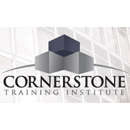02-07-2022 - Intro to Fiber Optics - Rochester, NY
Training Provider: Cornerstone Training Institute
Dates: MO Feb 07, TU Feb 08, WE Feb 09, TH Feb 10, FR Feb 11 from 8:00am to 4:00am
Location: Rochester, NY
 No Reviews
No Reviews
We're sorry, but registration for this event has ended
View Upcoming Intro to Fiber Optics In Rochester, NY| TICKET TYPE | PRICE | QUANTITY |
|---|---|---|
|
One Workshop Ticket more info» | $750.00 | Registration Ended |
| Registration Ended | ||
This Introduction to Fiber Optics course provides an in-depth instruction on how to design, install, and maintain fiber optic networks. Students will learn through a combination of interactive lecture and hands-on training. By the end of this course, students will understand the basics of fiber optics and be able to perform essential duties of a fiber optics technician.
Upon successful completion of this course, students will earn a course completion certificate.
Who Should Take This Course?
- Anyone working with fiber optic communication systems
Topics to be Covered:
- Fiber Basics
- Fiber Optic Transmission Theory
- Cable
- Connectors
- Splicing
- Fiber and Cable Management
- Installation
- OSP Installation
- Test Equipment
- Optical Testing
- Restoration
- Communication Systems Basics
- Loss Budgets
- Safety and Personal Protective Equipment
- Hands-On Practical Lab
Classroom Lecture
DAY 1
Fiber Basics
• Digital communications
• What is an optical fiber?
• Fiber coatings
• Optical fiber color coding
• Basic units of measure in fiber optics
• Standards committees
Fiber Optic Transmission Theory
• The electromagnetic spectrum
• Fiber optic transmitters
• Fiber optic receivers
• Optical power
• The dBm scale
• Loss and attenuation
• Refraction
• Optical reflection
• Optical dispersion
• Bandwidth
Fiber
• The physical plant
• Fiber comparison
• What is a mode?
• Multimode fiber characteristics
• Multimode optical fiber types
• Application supported distance
• Single-mode fiber characteristics
• Single-mode optical fiber types
• Application supported distance
Cable
• Cable materials and structure
• Indoor/outdoor cables
• Distribution cables
• Armored cable
• Breakout cables
• Indoor/outdoor cables
• Loose tube outside plant cables
• Ribbon cables
• Aerial fiber optic cables
• FTTx drop cables
• Fiber and buffer color codes
• Composite and hybrid cables
• Cable interconnection options
DAY 2
Connectors
• Main connector components
• Connector types
• Subscriber connector (SC)
• BFOC/2.5 (ST)
• LC connector
• Multifiber connectors
• Older connector styles
• Termination techniques
• Fiber optic connector inspection
• Cleaning methods
• Attenuators
Splicing
• Fusion splicing
• Fiber cleaving
• Ribbon splicing
• Mechanical splicing
• Pigtail splicing
Fiber and Cable Management
• Fiber management scenarios
• Rack and wall mount patch panels
• Splice panels
• Fiber distribution units
• Splice closures
• Splice trays
• Fiber raceway systems
• Fiber distribution hubs
• Fiber access terminals
• Multiport service terminals
• Fiber transition terminals
• Vaults and handholes
• Panel and closure considerations
Installation
• Cable handling
• Guidelines for fiber optic cable installation
• Standards, regulations, and codes
• Cable installation products
OSP Installation
• Underground installation techniques
• Conduit and duct installation
• Cable pulling methods
• Tension monitoring
• Aerial installation
• Mid-span (express) entries
Test Equipment
• Optical loss test sets
• Optical time-domain reflectometers (OTDRs)*
• Key considerations for OTDRs
• Fiber identifiers
• Visual tracers
• Visual inspection
• Optical talk sets
• Testing documentation
Optical Testing
• TIA-568 testing terminology
• Test methods
• Multimode launch conditions
• Optical loss testing
• Reference test methods
• Testing transmitter and receiver power
• OTDR deadzone
• Gainers on OTDR traces
• Testing through fiber optic splitters
• Documentation
Restoration
• Typical causes of failure
• Types of fiber optic damage
• Aerial restorations
• The need for slack cable
DAY 3
Communication System Basics
• Laser light sources
• Lasers in single-mode systems
• Light sources in multimode systems
• Laser and LED spectral width
• Reflection concerns
• Typical span distances
• Repeaters, regenerators, and amplifiers
• Point to point
• Point to multipoint
• Passive devices
• Optical splitters
• WDMs and bidi devices
• CWDM and DWDM
Loss Budgets
• Loss budget basics
• 10/40/100 Gigabit networks
Safety
• Fiber optic safety best practices
• Visual safety using fiber optic sources
• Wavelengths and the eye
• Laser classifications
• Working with lasers
• Safety eyewear
• Working with optical fibers
• Personal protective equipment
• Chemicals
• Safety data sheets (SDS)
• The work area
• Installation practices
Hands-on Skills Learning
DAY 4
Connectors
• Prepare a simplex jacketed fiber for termination.
• Prepare a simplex 900-micron fiber for termination.
• Clean a fiber connector endface.
• Use inspection scopes to view a connector endface.
• Use a light source and power meter to measure loss on a mated connector pair.
• Prepare and install a mechanical splice-on connector.
• Use a visual fault locator to identify nearby bends and breaks.
Cable Preparation for Termination
• Identify fiber optic cable and jacket types.
• Prepare a stranded cable for installation into a fiber closure/panel.
• Prepare buffer tube for a splice tray.
DAY 5
Splicing and OTDRs
• Clean the test port and all connectors of an OTDR.
• Modify typical OTDR settings to obtain a clear interpretable trace.
• Recognize and interpret events depicted by an OTDR.
• Use an OTDR to test and identify events in a span.
• Use a launch box to enable identification of events close to the OTDR.
• Join fibers with a mechanical splice.
• Strip and cleave an optical fiber.
• Modify typical splicer settings to obtain a highquality splice.
• Perform arc calibration on a fusion splicer.
• Create a fusion splice.
• Learn how to install a fusion splice-on connector.
Optical Loss Testing
• Clean connector endfaces using wet and dry cleaning methods.
• Identify damaged connectors.
• Use a light source and power meter to observe the effects of a macrobend and microbend on a fiber.
• Learn one-, two- and three-cord reference testing.
• Use a fiber identifier to detect active fibers.
| COURSE LOGISTICS | |
|---|---|
| Certificates | Cornerstone's webinar certificates are issued within 2-3 business days by email. If you are attending a course in-person, class certificates are issued on the day of class. |
| Parking | Parking and entrance in back of building. |
| Food | Coffee and lunch provided |
460 State Street Floor 2, Rochester, NY 14608
MO Feb 07, TU Feb 08, WE Feb 09, TH Feb 10, FR Feb 11 from 8:00am to 4:00am

Cornerstone Training Institute is New York State's most qualified environmental safety firm with a proven history of minimizing risk while maximizing worksite efficiencies and cost savings. We have built our company foundation on lasting partnerships and gladly share our network and expertise with all of our clients. Our team represents the most qualified and experienced specialists in the field of asbestos, lead and OSHA training. Our professional hands on approach will equip you with the skills necessary to handle the demands of all potential safety and environmental hazards.

Questions? 954-400-0595


